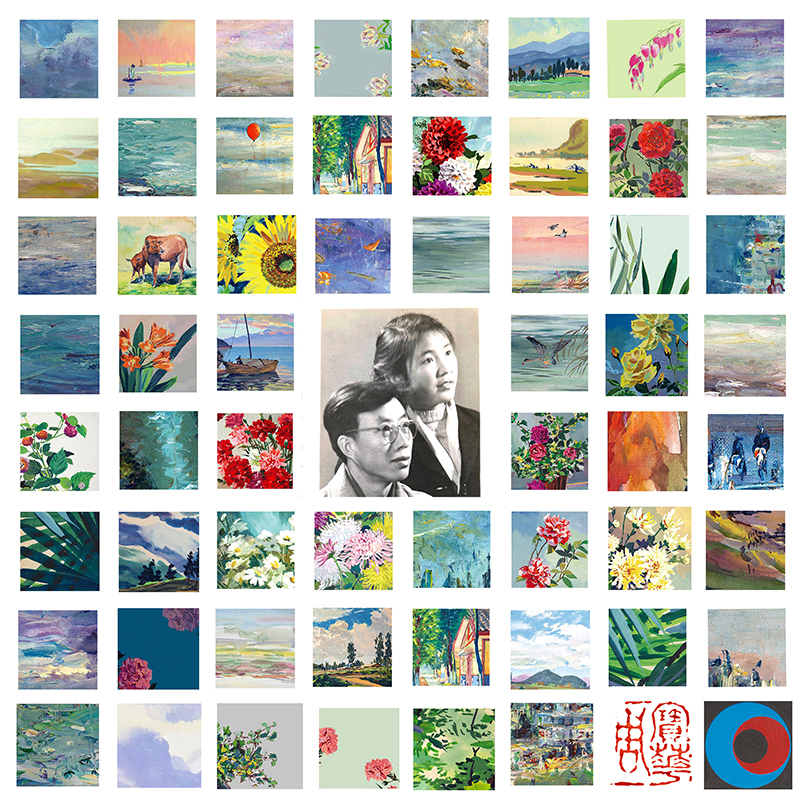
“Chapter One: Light and Shadow — Zhou Baohua & Wang Bangsi” The first series consists of 59 images, images centers on a black-and-white portrait of my parents, artists Zhou Baohua and Wang Bangsi, framed by a portion of their lifelong creations—my mother’s gouache florals and patterns, my father’s gouache and oil paintings. Monter’s life was marked by hardship and three major upheavals. During the Cultural Revolution, her right hand was permanently injured; most of her later works were painted with her left hand, carrying both resilience and quiet beauty. My father was gentle, reserved, and humble throughout his life. His artistic philosophy was: “Art is not about teaching or instructing; it is about expressing what cannot be taught.” In 2022, my parents passed away one after the other. In 2022, The paintings, dormant for seventy years, were unveiled for the first time
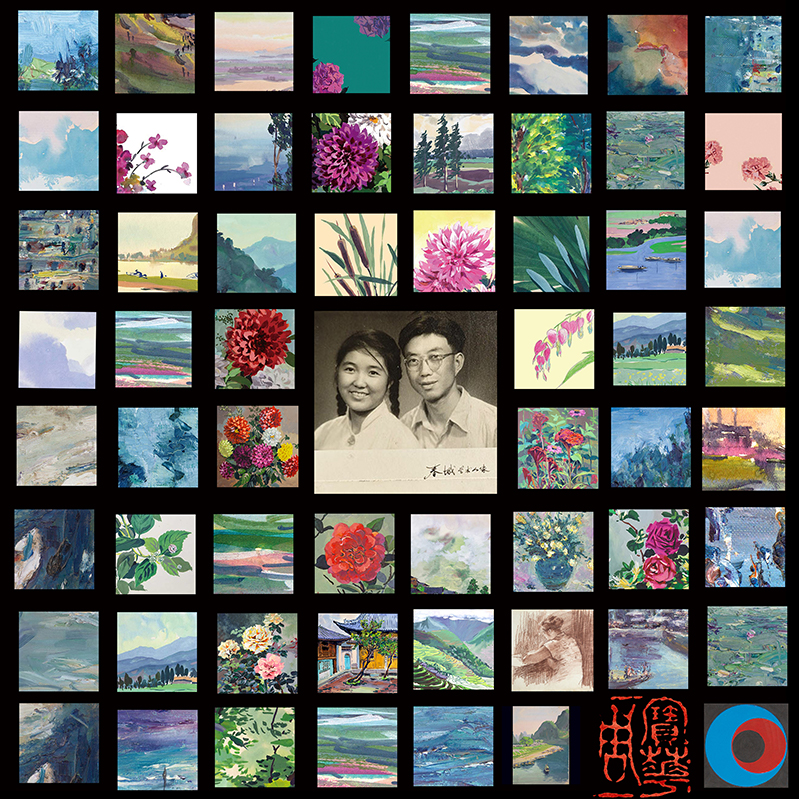
Whispers of Paintings. The second series consists of 59 images, with a black-and-white portrait of my parents at its center, capturing a gentle moment preserved deep in time. My mother’s gouache florals and decorative patterns remain vibrant and delicate; my father’s gouache and oil paintings are calm and warm. Together, their works form a painted diary—recording daily life, inner landscapes, and reflections of each other. In this collage, memories and colors intertwine, letting the years flow quietly within the canvas.
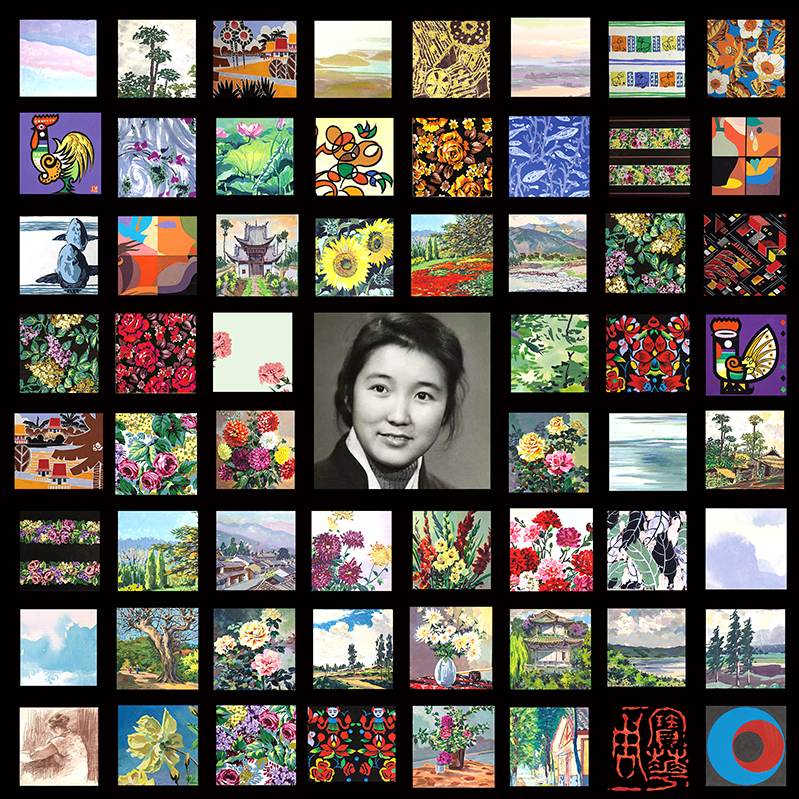
This series is composed of 59 watercolor-gouache works by my mother, Zhou Baohua—paintings ablaze with vivid, passionate colors, their strokes alive with the vigor of youth. She was among the most gifted students of Li Youxing, the founding president of Sichuan Fine Arts Institute, standing at the threshold of a promising artistic career. In 1958, on the verge of graduation, she was branded a “Rightist” and expelled, stripped of her degree and the chance to advance her studies. Yet the flame of her art never went out. On the canvas, she preserved the warmth of life and the brilliance of color, letting the fire burn quietly through the years.
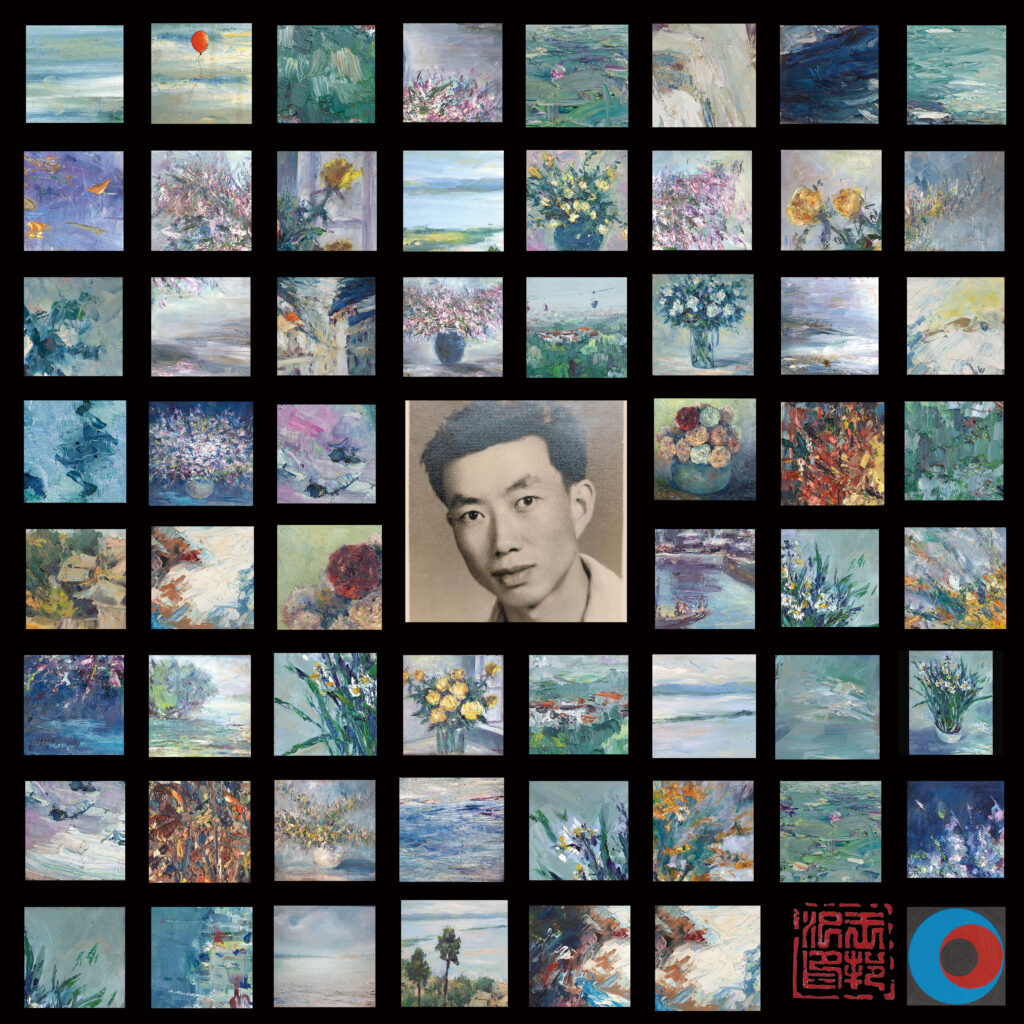
This series consists of 59 images, all drawn from Bangsi Wang’s later oil paintings. Using blue, green, and gray as his primary tones, he conjured vast, tranquil spaces—where wind, cloud, and even time itself seem gathered into the canvas. Gentle, humble, and unassuming, my father often said, “What cannot be taught is what we call art.” To him, true art could never be handed down in lessons—it had to be realized within. His philosophy, “to aim without aiming,” was like drawing an empty bow: an arrow that seeks no target, yet finds its mark. Every stroke was a journey toward an invisible realm. These works are the wide plains of his inner world, and his silent, enduring dialogue with the universe.
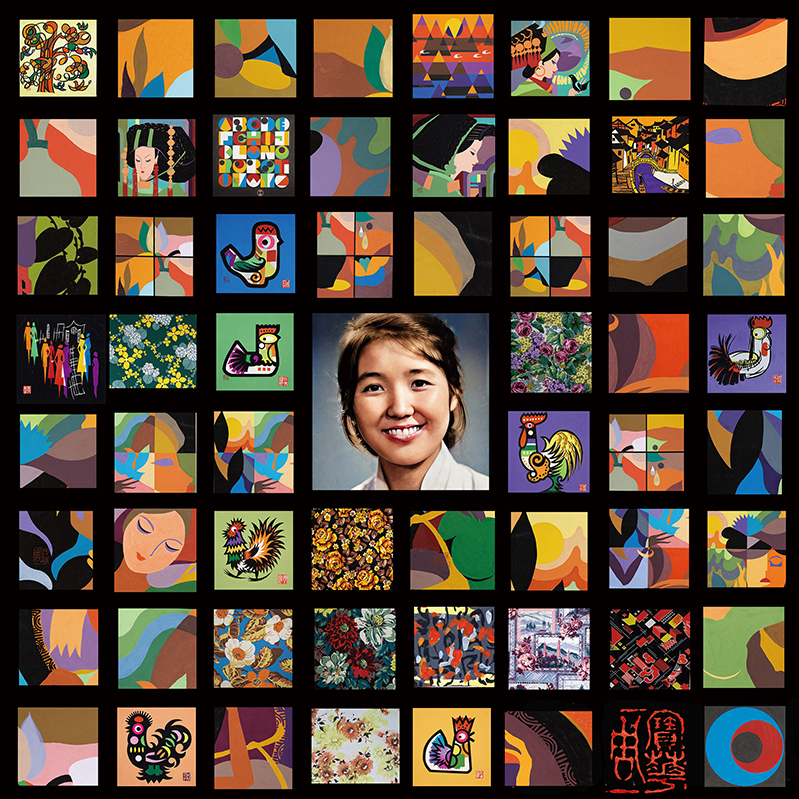
This series consists of 59 images, all drawn from Baohua Zhou’s decorative patterns and paintings created after her right hand was crippled—painted entirely with her left hand. In the midst of adversity, her artistic passion surged like flames in the wind: colors blazing, strokes bold and unrestrained. They embody both the splendor in her name, “Baohua”, and the unyielding spirit of her life. These works mark not only the maturity of her artistic voice, but also a rebirth forged in wind and flame.
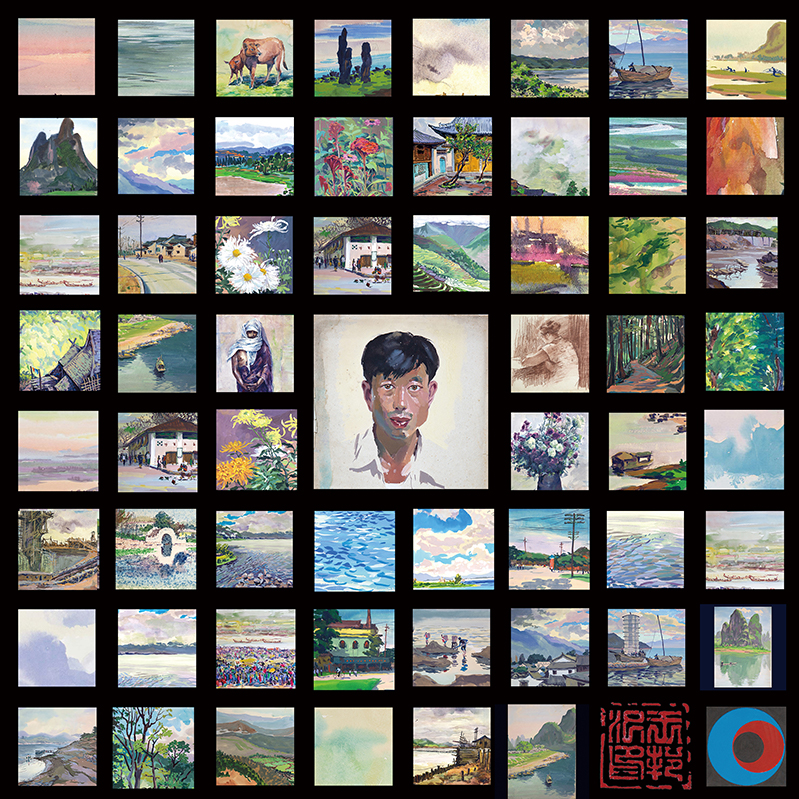
This puzzle gathers 58 early gouache landscapes painted by my father Bangsi Wang in his youth—each a quiet witness to his first artistic footsteps. At the very center rests his self-portrait, painted by his own hand— a gaze that bridges the past and the present.
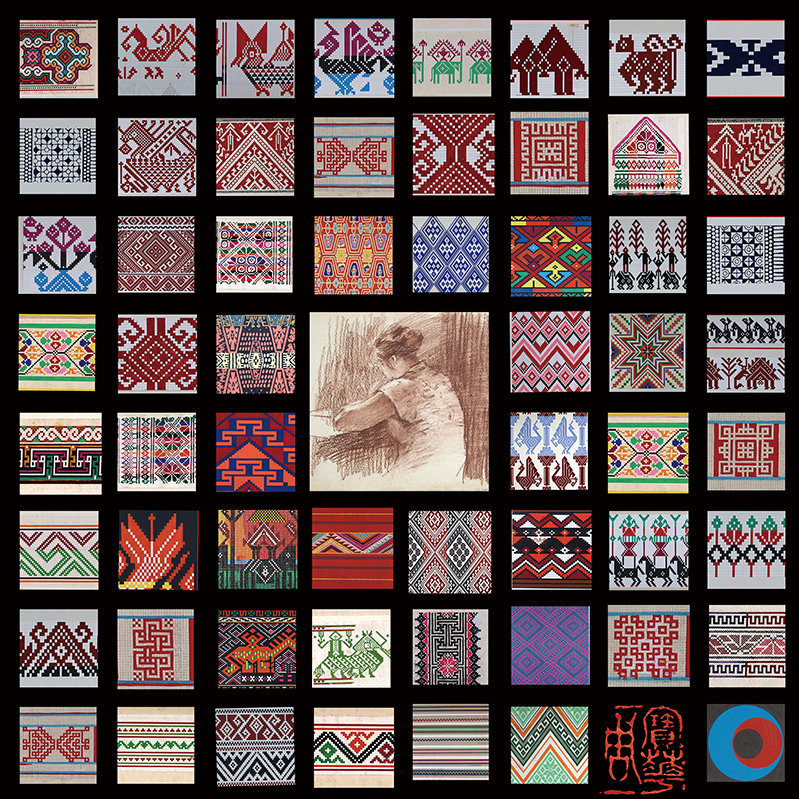
These patterns draw inspiration from the folk motifs and natural spirit of the Yunnan plateau’s ethnic minorities. Each square seems to capture the rhythm of festival drums, the warmth of bonfires, and the whispers of the mountain winds. By Baohua Zhou. More than expressions of textile art, they mirror her inner world in later years—where, through the stitches of her left hand, flowed both a love for life and a longing for freedom.
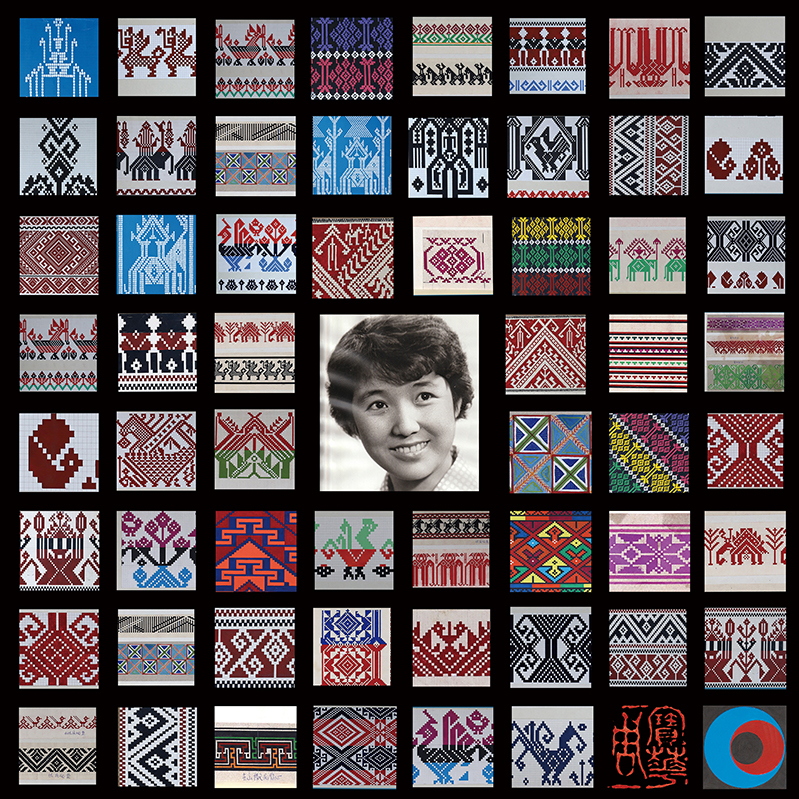
This mosaic is composed of 59 cross-stitch patterns, all created after the 1980s. They are late-period selections completed by Baohua Zhou, using only her left hand. She was born into a prosperous family in Yunnan, but at the age of 13 her family fell into decline. At 16, she taught herself and was admitted to the Sichuan Fine Arts Institute, where she studied under the master, Li Youxing. In 1958, she was labeled a “Rightist” and forced to leave school without graduating. During the Cultural Revolution, her right arm was permanently injured. Yet color never left her life. These cross-stitch works embody the meaning of her name—Baohua, “precious radiance.” Through hardship and resilience, her art continues to shine with enduring brilliance.